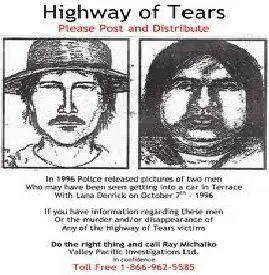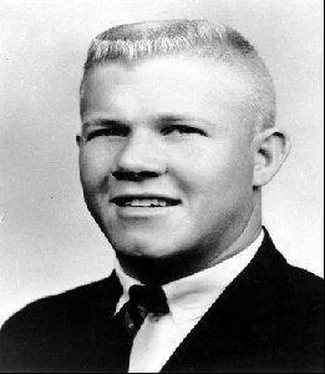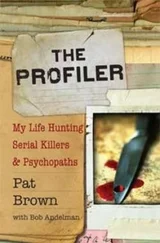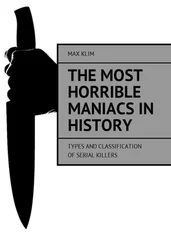In 1976, an unidentified killer stalked Oakland County, Michigan, preying on inhabited children. The killer was nicknamed "The Babysitter" due to the abundant care he provided his young victims while he held them captive before murdering them.
Of the six victims accredited to The Babysitter Killer, two were raped. The corpses of four of the children were washed clean and carefully laid on the fresh snow. The obsessive scrubbing of the corpses suggested that the killer could have been practicing some type of purification rite, or simply removing any incriminating evidence.
Because of the diverse killing methods used by the attacker, authorities initially believed they were searching for up to four different killers; however, by the sixth victim, eleven-year-old Timothy King, police started to believe that they were searching for one killer. After Tim's disappearance, his mother went on television promising the boy his favorite chicken if he returned home. But Tim never made it back home alive. The killer, however, did feed him a chicken dinner before suffocating him.
A Detroit psychiatrist published an open letter in March of 1977 directed to the killer theorizing on the killer’s motives for preying on children. Of the many responses he received, one stood out: "The article was wrong you better hope it doesn't snow anymore." The psychiatrist received more letters from a man called calling himself Allen who claimed that his roommate was the mysterious killer. Both men were Vietnam vets, and he claimed buddy was targeting suburban children in his war against affluent America.
There were no more deaths attributed to The Babysitter. Authorities believe the killer might have retired, died, moved, or become incarcerated for an unrelated crime. Perhaps he moved to warmer climates where he never again saw fresh snow.
In the 1980s, suspicion focused on a former Warren autoworker in Norberg when, among his belongings, relatives found a cross inscribed with the first name of a victim, Kristine. Although he died in a car wreck in 1981, on August 29, 1999, Michigan authorities announced they were going to his exhume his grave in Wyoming and take DNA samples to match it against a hair found on the body of one of his suspected victims. This turned out to be negative.
The St. Louis Killer
St. Louis, Missouri (8+ Victims)

On the Southside of St. Louis in the late 1990s, a serial killer raped and killed at least eight women.
The first victim found was Lolina Collins, forty-one, whose autopsy revealed that she had been strangled. Her body, dressed only in a bra, was found with a trash bag over her ankles and a second trash bag over her arms. The mother of three children had worked at a state hospital until April, and was planning to become an elementary school teacher. Police identified the second victim as Brenda Beasley, thirty-three, of St. Louis. A motorist found her naked body lying by a fire hydrant, her wrists and ankles bound with duct tape. It was uncertain if she was sexually assaulted, but apparently she had died due to blunt force trauma to the head. She was a mother of four children and worked full-time at a fast food restaurant.
The bodies of six other women have been found in the same general area in East St. Louis since November of 1999. Most were in areas frequented by prostitutes and drug users. There were no witnesses and the authorities have nothing to go on. The killings, however, have since stopped.
Possible Columbus Serial Killer
Columbus, Mississippi (3-5 Victims)

In a small community of Columbus, Mississippi in 1995, five senior citizens were killed. The Police Chief Donald Freshour warned that a serial killer was targeting the elderly in the community of only 24,000 citizens.
Louise Randal, eighty, was found strangled in her home on November 21, 1995. Louise was a retired server and needed a walker to get around. Just three weeks later, Betty Everett, sixty-seven, a retirement home hairdresser, was also strangled in her home. Both of these women were had been gagged and bound with tape.
On October 13, Robert Hannah was beaten on his head and strangled in his home and his house set fire. The police believe that the fire was set to cover up the murder. The following year, on July 8, 1996, the body of Mack Fowler, seventy-eight, was found in his kitchen, and the corpse of George Wilbanks, seventy-five, was found Nov. 2, 1997 in the Wilbank home. The investigations into these killings did not lead to any credible suspects.
Three years later, however, on April 17, 2000, the authorities announced they were close to solving at least two of five unsolved killings of local senior citizens. Police said they no longer considered the five murders to be the work of a serial killer, and that they believed only two of the deaths were linked together. In fact, they said they had evidence linking an unnamed suspect to the murders of Betty Everett and Louise Randall.
"I would like to bring some closure to this for several reasons," Chief Billy Pickens said. "One is for the families of the victims, and the other is for the community. I think the community has accepted that there wasn't a wild serial killer running around." Columbus City Councilman Chuck Weldon said people do not talk much these days about the unsolved killings, and that widespread anxiety seems to have diminished. "Everybody is just anxious to get them solved," he added.
The crimes have yet to be solved. Did the killer move on, die, just stop killing, or has he been incarcerated for another crime?
The Highway of Tears Killer
Highway 16 - Yellowhead, British Columbia (40+ Victims)

Along a 500-mile section of highway between Prince George and Prince Rupert, British Columbia, Canada, at least forty-three young women have disappeared since 1969. This section of road is now called the Highway of Tears, and a website has been launched in the victims honor by Prince George businessperson Tony Romeyn, who was moved by the stories of women who have gone missing along Highway 16, and wanted to help the families of the victims.
http://www.highwayoftears.ca/website%20Launched.htm
On the site, there is a map of Highway 16 that shows the general area where nineteen victims were found or is said to have disappeared. Four of the nineteen girls are listed as missing, while the bodies of the other fifteen have been found and the cases considered homicides. Ann Bascu, who went missing in 1983, is the only one who went missing outside of B.C., in Hinton, Alta.
The RCMP, or the Royal Canadian Mounted Police, have examined the similarities among the murders and disappearances and have ascertained that eighteen of the victims share positive links.
The Highway of Tears Symposium was held in March 2006 by several Prince George-area aboriginal groups. The outcome was the Highway of Tears Symposium Recommendation Report, published June 2006. It states: "There is much community speculation and debate on the exact number of women that have disappeared along Highway 16 over a longer 35 year period; many are saying the number of missing women, combined with the number of confirmed murdered women, exceeds 30.” The report says the term Highway of Tears was the result of the "fear, frustration, and sorrow" that grew "within First Nations communities along the highway upon each reported case of a young woman's disappearance, or confirmation of a recovered body."
Читать дальше















